Transcription of Ministry of New & Renewable Energy - Government of India
1 As nations contend with the increasingly devastating impact of climate change, largely caused by anthropocentric developmental activities, the role of Renewable Energy in the Energy and electricity mix becomes primary. Across the world, many of the developed and developing countries have started giving primacy to rapidly increase the percentage of Renewable Energy in the overall Energy mix of their economies. Renewable Energy has become one of the most important factors and hope for the world to preserve the pristine environment and the planet s resources for future generations. India has been leading the world on this front showing the developing nations of the world a way forward for socio-economic growth without degradation of the India is very ambitious in its targets for promoting Renewable Energy .
2 In India , Renewable Energy has started playing an increasingly important role in the augmentation of grid power, providing Energy access, reducing the consumption of fossil fuels and helping India pursue its low carbon development path. Ahead of COP 21, India submitted its Intended Nationally Determined Contribution (INDC) to the UNFCCC, outlining the country s post-2020 climate actions. India s INDC builds on its goal of installing 175 gigawatts (GW) of Renewable power capacity by 2022 by setting a new target to increase the country s share of non-fossil-based installed electric capacity to 40 percent by 2030. The INDC also commits to reduce India s GHG emissions intensity per unit GDP by 33 to 35 percent below 2005 levels by 2030 and to create an additional carbon sink of to 3 billion tonnes of carbon dioxide through additional tree cover.
3 Prime Minister Narendra Modi while addressing the 74th session of the United Nations General (UNGA) in New York said while from a historic and per capita emission perspective India s contribution to Global Warming is very low, India is one of the leading nations when it comes to taking steps to address this issue. MULTIPRONGED APPROACH FOR GROWTH OF THE SECTOR To meet its ambitious targets and commitment to the entire world in the fight against climate change, India has been rolling out multiple initiatives, programs, policies and incentives to accelerate the development of the Renewable Energy sector. It has driven the growth of the sector by holistically driving investments, resolving industry issues proactively, including the perspective of the stakeholders in charting the growth story, addressing policy concerns, all the while generating employment for the nations burgeoning youth population and skilling them keeping the needs of the sector in MISSION Launched in January 2010, the National Solar Mission (NSM) was the first mission to be operationalized under the National Action Plan on Climate Change (NAPCC).
4 Using a three-phase approach, the mission s objective is to establish India as a global leader in solar Energy , by creating the policy conditions for solar technology diffusion across the country as quickly as possible. The initial target of the mission of installing 20 GW grid-connected solar power plants by the year 2022 was enhanced to 100 GW to be achieved by the same target In 2015, the Government of India announced a target for 175 GW cumulative Renewable power installed capacity by the year 2022. A capacity of GW has been set up by December 2019 constituting more than 23 percent of the total installed capacity. India has 4th and 5th global positions in the wind and solar power deployment respectively.
5 Since 2013-14 till December 2019, the Renewable power deployment has more than doubled. Annually more than 10 million man-days employment is being created in the sector. Solar power capacity has increased by more than 14 times in the last five years from 2630 MW to 37505 MW in December 2019. POLICY INITIATIVES A range of policy instruments has been adopted to implement this mission. The revised tariff policy requires all States to reach eight percent solar RPO by the year 2022. The first phase of the mission opted for a reverse bidding mechanism; reverse bids (discounts) on benchmark tariffs set by the Central Electricity Regulatory Commission (CERC) were invited from prospective project developers.
6 Solar water heaters and rooftop systems have been promoted in certain Government , commercial and residential areas through regulatory intervention such as mandates under building by-laws and its incorporation in the National Building Code. Off-grid and rooftop solar applications have been promoted through the provision of subsidies from the central Government . Research and development is also being encouraged through approvals of R&D projects and the establishment of Centres of Excellence by the Ministry . These measures led to a decline in the purchase prices of solar power in India much more than expectations. Overall, NSM is proceeding well according to schedule.
7 Several policy measures were undertaken in the last five years including guidelines for procurement of solar and wind power through tariff-based competitive bidding process, repowering of wind power Figure : India - Source Wise Installed Power Generation Capacity (MW) as on , quality standards for deployment of Solar Photovoltaic systems and devices, provision of rooftop solar and 10 percent Renewable Energy as mandatory under Mission Statement and Guidelines for development of smart cities, amendments in building bye-laws for mandatory provision of rooftop solar for new construction or higher Floor Area Ratio, infrastructure status for solar projects, raising tax-free solar bonds, providing long tenor loans, incorporating measures in Integrated Power Development Scheme (IPDS)
8 For encouraging distribution companies and introducing With an aim to enhance farmers Energy independence, income and de-dieselise the farm sector, the Government had announced a new scheme Pradhan Mantri Kisan Urja Suraksha Evam Utthan Mahaabhiyan (PM-KUSUM). Ministry is aware of the technological edge that India can provide in the key RE sector and has provided the necessary impetus for investments and incentivizing new technology. The availability of funds at the competitive price for further growth of the sector is another important challenge. This issue has been addressed by making fresh project finance available at competitive rates for all new projects, especially for GENERATION AND To support the Make in India policy and to create decent employment to the youth, improving the credit flow to the SMEs, Ministry brought manufacturing linked project development with suitable incentives.
9 As the size of the development is increasing, the associated taxes, duties need special attention. Ministry has come up with timely recommendations to the Finance Ministry to create a conducive environment for orderly growth of the RE The focus of the promotion of Renewable Energy policies and initiatives taken in the last four years has led to large-scale penetration of and use of such technologies across the rural countryside. Such initiatives have created employment opportunities at multiple levels. Around 12 million man-days employment is being created per annum in the sector. More than 40,000 Suryamitras have been trained in the last five years to cater to the growing needs of the solar Energy sector and its service EMERGENT CHALLENGES AND BARRIERS PROACTIVELY As the country is racing towards achieving the target of 175 GW of RE installed capacity, new challenges are emerging in the form of huge capital requirements, protection of foreign capital investments in RE projects from payment delays, providing adequate ISTS transmission & distribution infrastructure and developing suitable land resources.
10 Ministry handled these issues with effective policy interventions and consultations with States. During the year, few of the major focus areas of action was to address barriers confronting large-scale adoption of Renewable power, including available land, low-cost finance, domestic manufacturing capacity, and skilled manpower. Major areas of action remained to strengthen the planned infrastructure, protocols and power grid To address the specific emergent issues, on 4 December 2019, Ministry of Power (MoP) was requested to amend the 13 February 2018 order: for ISTS waiver for sale of power from Government producers; to extend ISTS wavier for projects set up beyond RPO; waiver for hybrid power projects consisting of 5wind and solar with or without battery storage; wavier of ISTS charges and loses for projects set up under UMREPP under EPC mode.
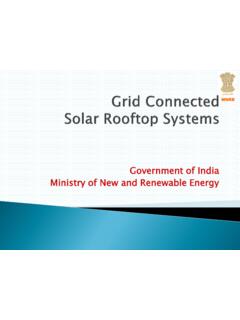
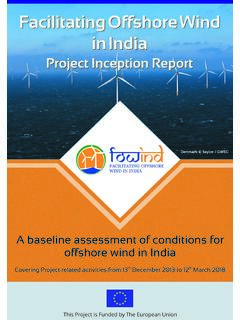
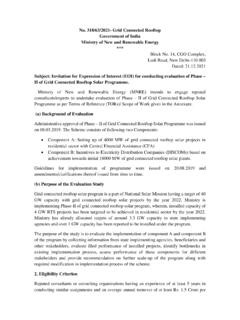
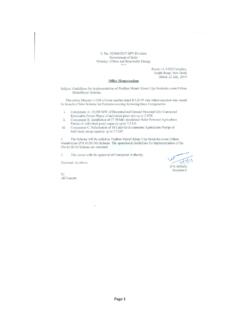


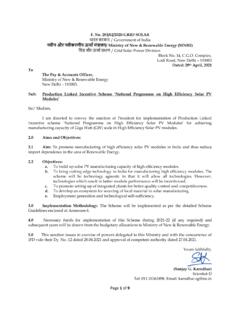
![No.283/54/2018-GRIDSOLAR-Part(2) JR/ 7@hr3jl ad]aufa ...](/cache/preview/e/9/9/f/e/5/f/4/thumb-e99fe5f40795c445f6a2c1028ca812b2.jpg)
